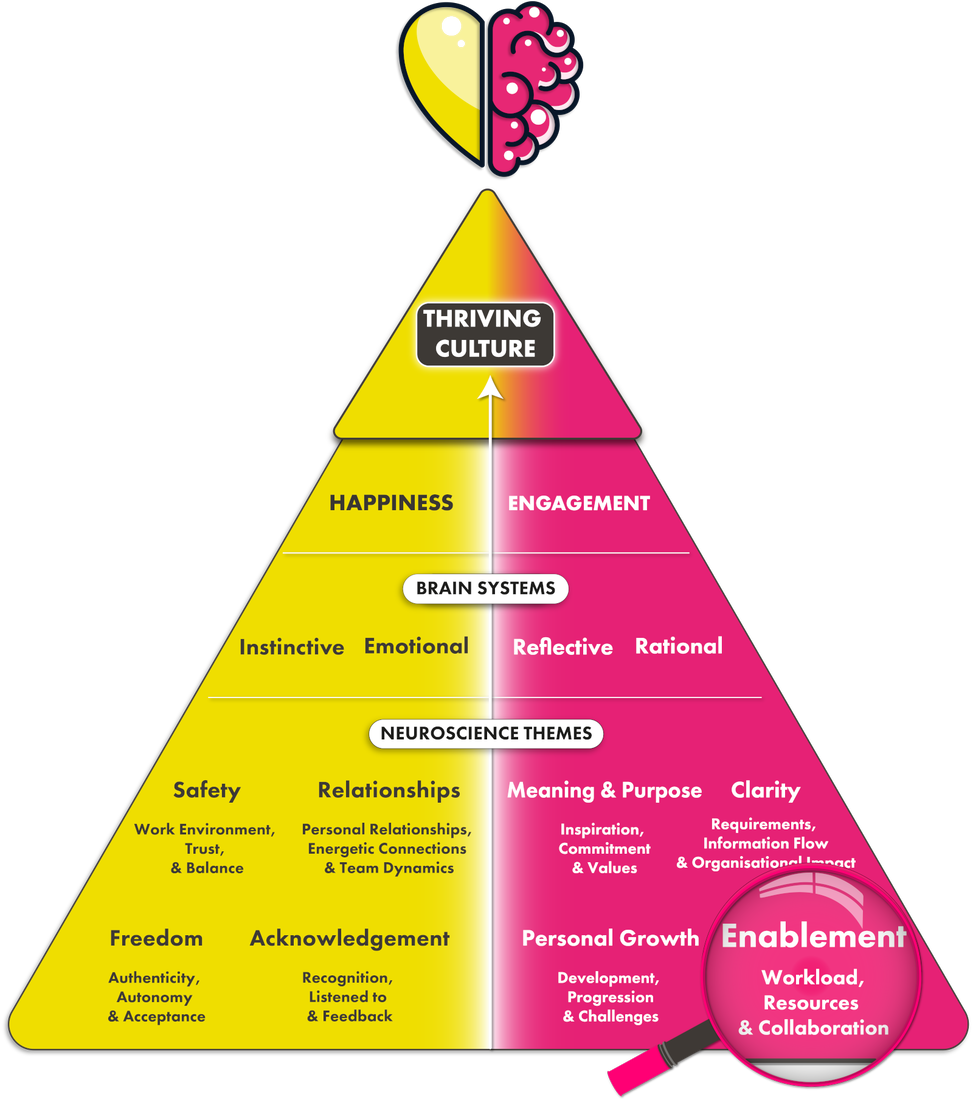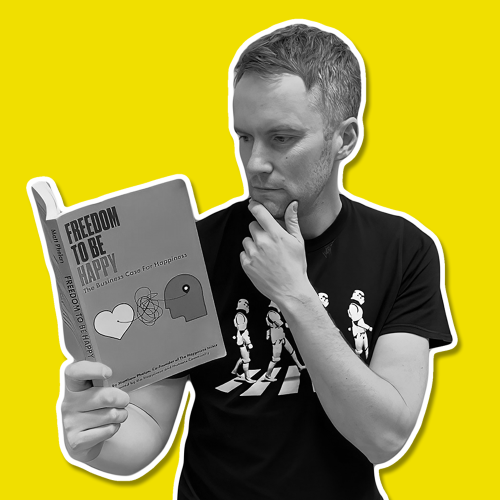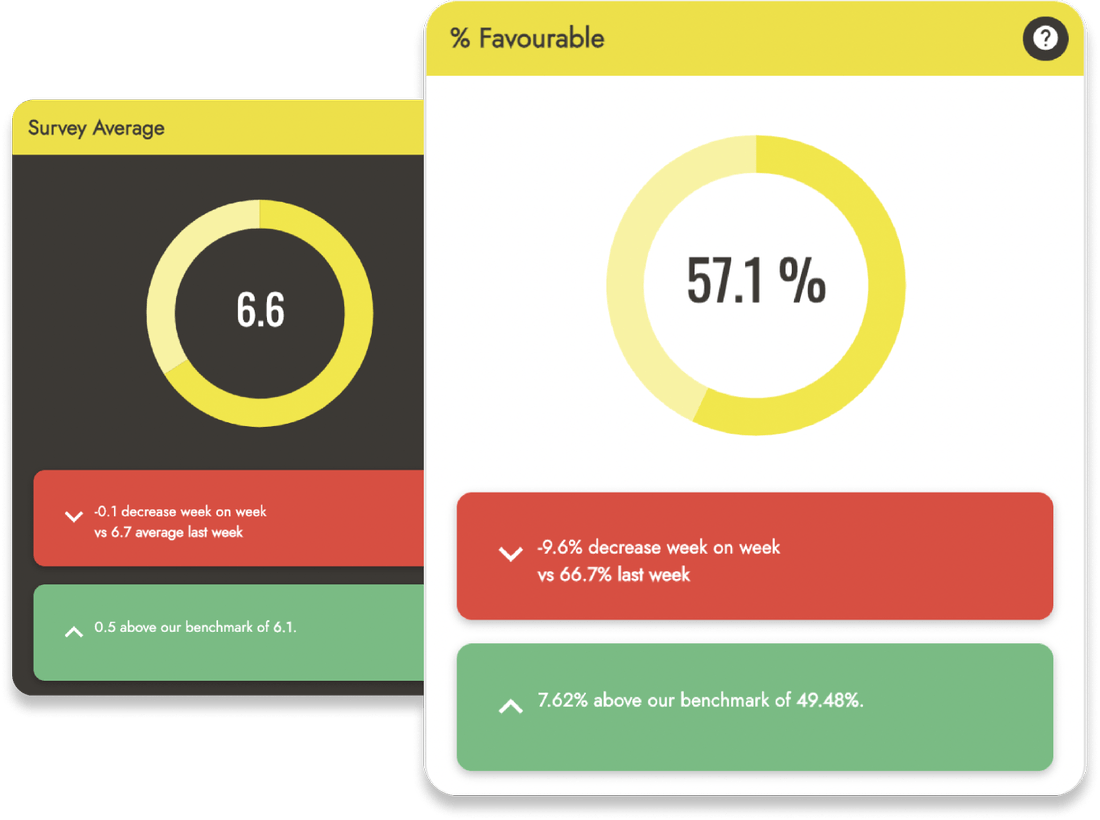Neuroscience Deep Dive: Understand The Impact of Workload on Employee Happiness
Employee engagement levels can be influenced by workload, which is associated with the Rational brain system in our neuroscience model.
If you've just landed here, we recommend heading over to our brain systems and neuroscience themes pages for an introduction to our neuroscience model and methodology. Otherwise, read on to find out how workload impacts workplace engagement.

Workload levels and the degree of challenge need to be sufficient to keep a person engaged but not overwhelmed. People need to be in a position where they have a realistic:
Chance of successfully managing their work so that they feel a sense of achievement, which results from effectively scheduling tasks, allocating, and prioritisation of critical things.
Opportunity to handle their workload.
Nevertheless, workload management is a complex topic that can put people off trying to discuss it. However, it’s extremely important to have conversations around workload levels because the organisation will not achieve its desired goals and outcomes if you don't.

What’s a Realistic Workload?
Start by asking what your people believe they need to help the company reach its goals.
You brought them in to do just that, so ask them what they need and then listen. Many companies still have a top-down approach of focusing on the target because that’s what the company needs. They believe employees should just do what they’re told because the company is paying them. But this model fails to consider what the employees need in order to deliver that target. And often, the employees hired have vast amounts of experience, but the company is not listening to or utilising their expertise. You've got to listen to what's out there.
As a manager, you don’t always know the right amount of workload for your employees. You will need to test and learn with the individuals in your team.
Figure out where they are, their organisational methods, and their focus levels. There is often a lot of training and learning about doing work, but none around how people work. We don't teach people how to schedule work, how to batch it and crack through things, how to prioritise, or how to rest.
Having one-to-ones with individuals gives you the chance to understand what they actually need to improve. You’ll learn what you can do to help and guide them toward improvement. Taking inspiration from martial arts, in karate classes, you will have students from white belts (new to the sport) all the way to black belts (very experienced). The instructor gives the white belt students certain things to do and the black belt students something completely different because the instructor understands each student’s abilities.
As a manager, you've got to know where people fit and how much they can and can’t do. It’s challenging to determine what each individual actually needs but this is where you can add the most value.
Workloads are Structured Differently
It’s your job as the manager to make your people superstars, which has to be done one person at a time. In terms of workload, how people are wired, and how they structure their day and week, that’s what will make the difference.
For example, some people work best by creating a clear, focused list of the tasks they will accomplish in the day to make the greatest impact on the business. They don’t tend to get involved in long discussions or sit for long meetings if they feel there’s no added value for them.
Alternatively, there are those who spend a lot of time talking and engaging with others, which is very normal because, as humans, we are social animals. However, if they spend all their time talking, the hours disappear, and suddenly they’ve got five hours of work to complete in only two hours. This is when the pressure and stress start to build because reaching the goal has to be done in a shorter timeframe.
Workload comes back to focusing the mind in terms of what they need, what is actionable, and what skill set is needed to be built to get things done for the business.
Flexibility
When you give people more flexibility, you actually get more out of them. The problem we have is the traditional operating model of you being paid for x number of hours per day - this often has nothing to do with productivity.
Looking at the neuroscience, neurobiology, and neurophysics of how we work, the most productive and energetic time is the three or four hours after we’ve woken up. After that, our energy levels start to fade. As more time elapses, our energy and productivity levels fade faster. When we are pushing through work, it isn’t very productive and generally gets very poor returns.
One way to get a boost is by taking a little nap. Sleeping restarts your brain, allowing all the things you’ve learned to get sorted and creating new pathways and patterns to reorganise your thoughts. Doing this can quickly increase your energy levels to about 80%.
Focus & Resets
As humans, generally, we can only stay focused for about 90 minutes. But for some people, it’s as little as 30 minutes. So you've got to work out what you can do in this focused time, and then you have to pause.
Step back, look out the window, grab a cup of coffee, and close your eyes for a few minutes. Unfortunately, some workplaces strain people's focus and ability, which is when accidents or mistakes happen. We are not wired to focus for hours on end. We need breaks, pauses, and time to reset so that we can refocus.
Doing the Minimum Isn’t Necessarily Quiet Quitting
Doing the minimum in a job isn’t necessarily quiet quitting; the goal for the job is being met, but perhaps the job is not the individual’s goal. They may not accept promotions or take on other roles because these don’t meet their personal objectives. This can feel unusual but in today’s work environment, many people are not quite sure which direction they are going, so they are simply waiting for opportunities rather than deciding what work they want to do.
When you work for a company, it is very clear what they want from you in terms of your role, but what do you want from that company? What is your plan? Will you stay for 20 years, or is there something else you want in your career? There is no right or wrong answer; as long as you're happy, you are getting what you want and growing.
The sad truth is, many people meander along in careers until the day comes when the company decides they can’t afford them anymore or priorities shift and the role is no longer needed. It’s important to treat yourself like a company. Decide the amount of time you will spend with the organisation. Give what you’ve been hired to give, and do it really well. But also decide what you want to learn during that time so that you can continue growing. Decide when you will leave or step up into a new role because if you don’t, the decision will be made for you.
*This is an excerpt from the Happiness and Humans Podcast with Azzy Aslam, Performance Habits Coach at Comentra. Click here to listen to the full podcast.

Linked to Engagement in our neuroscience methodology... learn more
About The Happiness Index
The Happiness Index helps organisations measure the key employee engagement AND happiness drivers to power their people strategy.
Our unique platform offers the products, insights and tools to shine a light on your cultural health and empower management to drive thriving cultures.
Our neuroscience-based pre-built surveys measure the full employee experience - from onboarding to exit to empower and enable organisations to understand their people and create data-led action plans.




